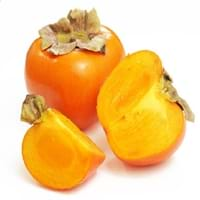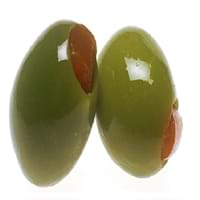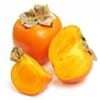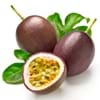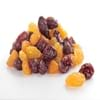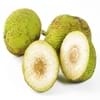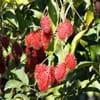Health Benefits
Anti-oxidant properties, Beneficial in curing fever, Cancer prevention, Heart care, Reduces nervous tension
Cancer prevention, Helps in cartilage regeneration, Prevents macular degeneration, Treatment of alzheimer's disease
General Benefits
Anti-inflammatory properties, Boosts immune system, Controls blood pressure, Digestive aid, Eye care, Fights against infections, Helps in weight loss, Improves blood circulation
Anti oxidant properties, Anti-inflammatory properties, Boosts immune system, Controls blood pressure, Digestive aid, Maintains healthy cholesterol level
Skin Benefits
Anti-aging benefits, Brightens and lightens complexion, Reduces wrinkles
Hydrates skin, Skin rejuvenation, Treatment of skin diseases
Hair Benefits
Good conditioner, Promotes longer and healthier hair, Treatment of dandruff
Acts as moisturizer, Good conditioner, Regulates hair growth
Allergy Symptoms
Abdominal pains, Anaphylaxis, Inflammation
NA
Side Effects
Affects blood glucose levels, Decrease in blood sugar levels, Coagulation
Affects blood glucose levels, Dizziness, Stomach pain
Best Time to Eat
Along with meal, As a snack in the late afternoon, Don't consume at night and before bed, Eat the fresh ones, avoid mixing with any other foods, don't eat after meal.
Hardly eaten raw, Olive oil is consumed for many purposes.
Vitamin A (Retinol)
Not Available
Vitamin B1 (Thiamin)
Not Available
Vitamin B2 (Riboflavin)
Not Available
Vitamin B3 (Niacin)
Not Available
Vitamin B5 (Pantothenic Acid)
Not Available
Vitamin B6 (Pyridoxin)
Not Available
Vitamin B9 (Folic acid)
Not Available
Vitamin C (Ascorbic Acid)
Vitamin E (Tocopherole)
Not Available
Vitamin K (Phyllochinone)
Not Available
Lutein+Zeaxanthin
Not Available
Calories in Fresh Fruit with Peel
Calories in Fresh Fruit without Peel
Not Available
Not Available
Calories in Frozen Form
Not Available
Not Available
Calories in Canned Form
Not Available
Type
Berry, Tree fruit
Tree fruit
Season
Autumn, Winter
Spring, Summer
Varieties
Early Golden, John Rick, Miller, Woolbright and Ennis
Manzanillo, Sevillano, Mission, Ascolano, Barouni, Gordal, Rubra and Picholine
Color
Orange, Red, Yellow
Black, Green, Purple, Yellow
Inside Color
Yellow
Brown
Origin
Eastern United States
Eastern Mediterranean Region
Soil Type
Sandy loam, Well-drained
Well-drained
Climatic Conditions
Can tolerate wide range of climates, Sunny
Warm to hot climate
Facts about
- It is said that formation of seeds inside the persimmon fruit shows what type of winter is coming(type of snow).
- There are about 2000 varieties of this fruit.
- The American persimmon has another name 'Possumwood'.
- In ancient Greece, 1st eye shadow was made by adding olive oil in ground charcoal.
- The most expensive form of olive oil is Extra Virgin.
- Largest type of olive tree is known as donkey tree & smallest one is called bullet.
Other Countries
Azerbaijan, Brazil, Costa Rica, Japan, Korea, Pakistan
Algeria, Egypt, Greece, Italy, Morocco, Portugal, Syria, Tunisia, Turkey
Top Importer
United States of America
United States of America
Top Exporter
United States of America
Italy
Botanical Name
Diospyros virginiana
Olea europaea
Synonym
Not Available
Not Available
Subkingdom
Tracheobionta
Tracheobionta
Division
Magnoliophyta
Magnoliophyta
Class
Magnoliopsida
Magnoliopsida
Subclass
Dillenhidae
Rosidae
Family
Ebenaceae
Oleaceae
Species
D. virginiana
O. europaea
Generic Group
Not Available
Olive
Difference Between American Persimmon and Olive
We might think that American Persimmon and Olive are similar with respect to nutritional value and health benefits. But the nutrient content of both fruits is different. American Persimmon and Olive Facts such as their taste, shape, color, and size are also distinct. The difference between American Persimmon and Olive is explained here.
The amount of calories in 100 gm of fresh American Persimmon and Olive with peel is 127.00 kcal and 115.00 kcal and the amount of calories without peel is Not Available and Not Available respectively. Thus, American Persimmon and Olive belong to and category.These fruits might or might not differ with respect to their scientific classification. The order of American Persimmon and Olive is Ericales and Lamiales respectively. American Persimmon belongs to Ebenaceae family and Olive belongs to Oleaceae family. American Persimmon belongs to Diospyros genus of D. virginiana species and Olive belongs to Olea genus of O. europaea species. Beings plants, both fruits belong to Plantae Kingdom.
